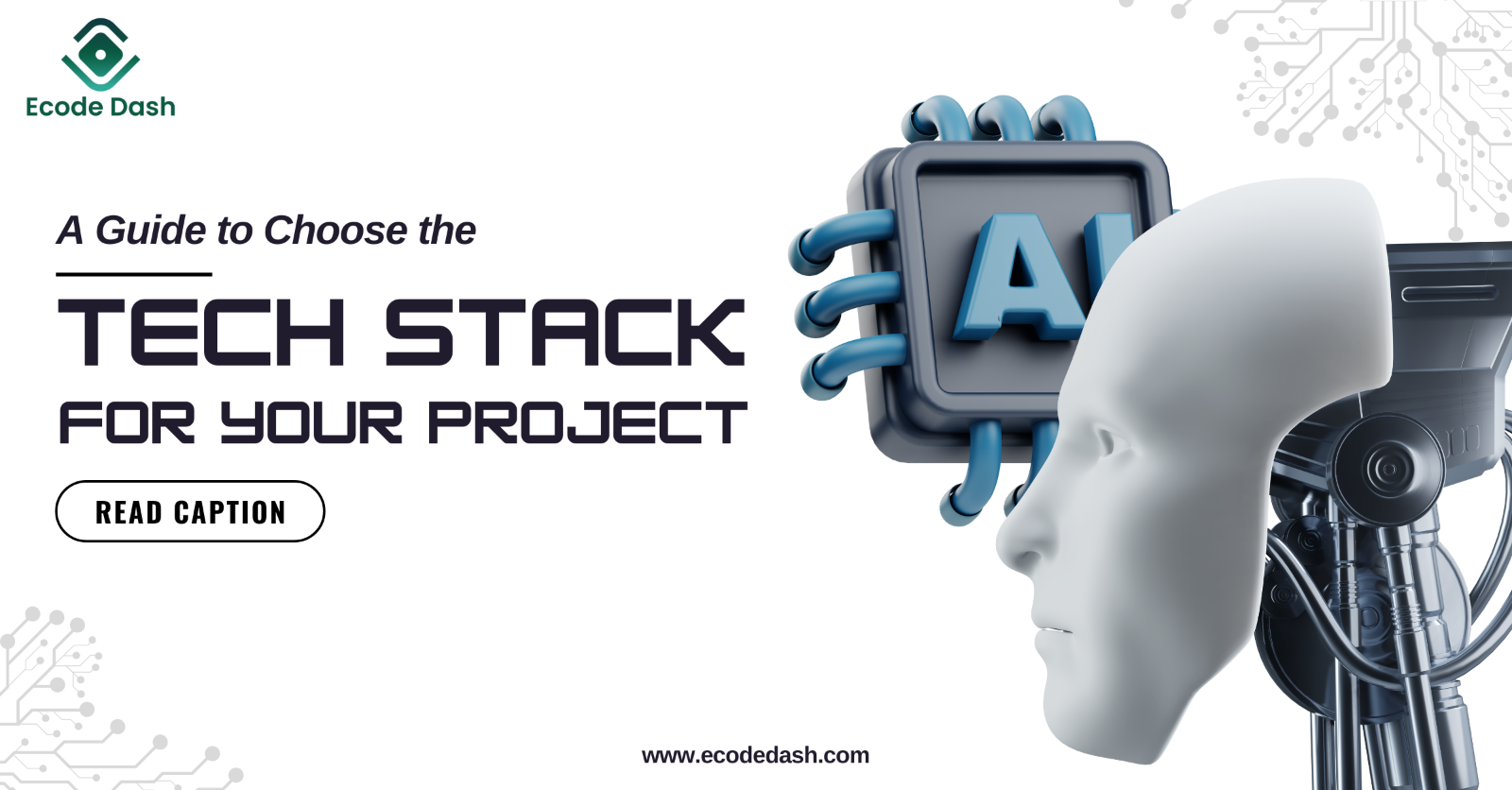
Just like you need cement, bricks, and beams, you need the right tech tools to build a high-performing application. For many startups and businesses, this is one of the earliest and most crucial decisions in the development journey. But what exactly is a tech stack, and how do you decide which one suits your project best? Let’s break it all down for you all.
A tech stack is essentially the combination of programming languages, frameworks, libraries, tools & software used to build and run an application. It’s divided into 2 main parts, Frontend & Backend.
Frontend (Client-side) :- What users see and interact with.
Backend (Server-side) :- Where the logic, database interactions, authentication, and server configurations live.
The operating system is the foundation software that manages hardware and enables communication between system components. Common OS choices for development and hosting include Linux, Windows, and macOS. It directly impacts performance, security, compatibility, and development tools available for your application environment.
A web server handles client requests, serves web pages, and ensures communication between the browser and backend server. Popular web servers manage traffic, handle security, and balance load. They’re essential for hosting and delivering your application efficiently.
The database stores, retrieves & manages data. It can be relational or NoSQL. The choice depends on data structure, scalability & of course, access patterns. A well-chosen database ensures fast & secure data management for your application.
Programming languages power the logic of your application. Common languages include JavaScript, Python, PHP, Java, and Ruby. They define how your application processes data, handles requests, and communicates between components. The language you choose influences performance, scalability, and the developer ecosystem.
Frameworks and libraries simplify development by offering pre-written code, design patterns, and functionalities. Examples include React, Angular, Laravel and Django. They speed up development, ensure consistency, and help maintain code quality. Choosing the right ones can significantly enhance productivity and project maintainability.
A runtime environment executes your application code. It provides the infrastructure needed for the program to run such as memory management and process handling. Examples include Node.js for JavaScript or JVM for Java. The right environment ensures stable and efficient execution of your code.
Deployment infrastructure includes the cloud services, tools, and pipelines used to host, scale, and maintain your app. Examples are AWS, Google Cloud, Docker, and Kubernetes. This layer supports continuous integration/deployment, load balancing, and resource monitoring for reliable performance and uptime.
Selecting the right tech stack can be overwhelming, but breaking it down into steps makes the process more manageable and aligned with your goals
Start by clearly identifying what your application needs to do. Determine whether features like real-time updates, high-speed performance, or heavy data processing are essential. Your core requirements will guide the foundational technologies you choose.
If you're building a mobile app, decide between native development using Swift for iOS or Kotlin for Android for the best performance, or go cross-platform with Flutter or React Native to speed up development and reuse code across platforms.
Look for technologies that are well-supported, easy to update, and have strong community support. Choose a stack that allows for scaling and adding new features without starting from scratch.
If you need a quick MVP, opt for frameworks like Ruby on Rails or Firebase. For more control, go for custom-built solutions, though they may take longer to develop.
Balance between development speed, long-term performance, and hosting costs. Open-source tools and BaaS platforms can significantly reduce initial expenses.
Not every tech stack fits every project. Choosing the right one depends on multiple key factor:
The nature and complexity of your project should directly influence your tech stack. If you’re building a static website, lightweight tools like HTML, CSS, and WordPress are sufficient. However, dynamic, data-driven, and real-time applications such as financial platforms demand advanced technologies for real-time updates and scalability.
When you're working with tight deadlines or launching a MVP, your tech stack should allow rapid development and deployment. Frameworks like React, Vue.js and Firebase offer ready-to-use components and BaaS that save significant time.
If your application is expected to grow in terms of user base, features, or geographical reach, you must choose a stack built for scalability. Tools like Kubernetes, Docker, AWS Lambda, and microservices architecture enable apps to scale horizontally and manage increased load without performance bottlenecks.
Every project operates within a budget. Open-source tools can significantly reduce development costs by eliminating license fees. Additionally,.. cloud platforms with pay-as-you-go models or serverless architectures can help early-stage startups save on infrastructure and maintenance.
If your app deals with sensitive user, data you must prioritize security. Frameworks like Django, Spring Boot, and Express.js offer built-in security features such as authentication, CSRF protection, and input validation. Choosing a stack with robust security practices reduces vulnerabilities and builds user trust.
| Tech Stack | Frontend | Backend | Database |
|---|---|---|---|
| MERN Stack | React | Node.js + Express | MongoDB |
| MERN Stack | Angular | Node.js + Express | MongoDB |
| LAMP Stack | HTML/CSS/JS | PHP + Apache | MySQL |
| Type | Tech Stack |
|---|---|
| Native (iOS) | Swift + Xcode + CoreData |
| Native (Android) | Kotlin + Android SDK + Room DB |
| Cross-platform | React Native or Flutter + Firebase/Node.js |
Facebook: React, GraphQL, PHP (HHVM), MySQL
Airbnb: React, Ruby on Rails, MySQL, Amazon RDS
Netflix: Node.js, React, Java, Cassandra
Uber: Node.js, Go, Redis, PostgreSQL
Take the time to evaluate, consult, and plan. Because in technology, foundation matters as much as innovation.
If you're still stuck deciding, then reach out to our team of experts, we at Ecode Dash help startups and enterprises by building powerful, future-ready solutions from the ground up…